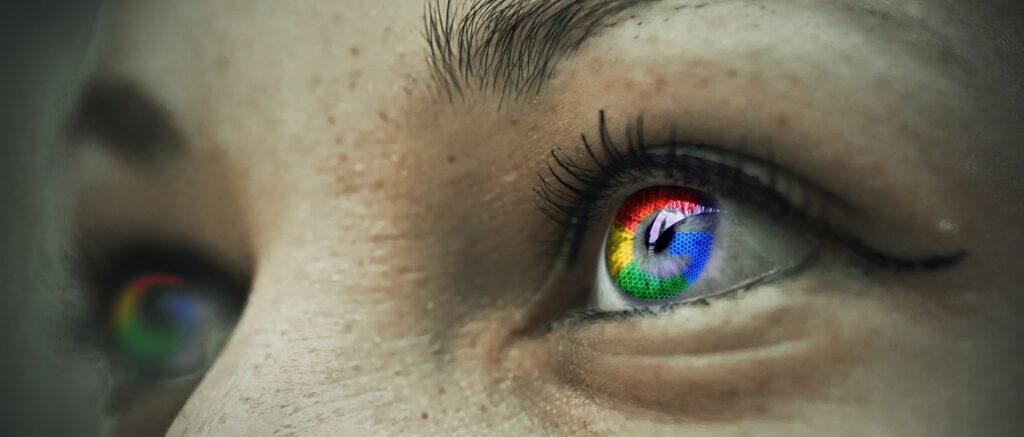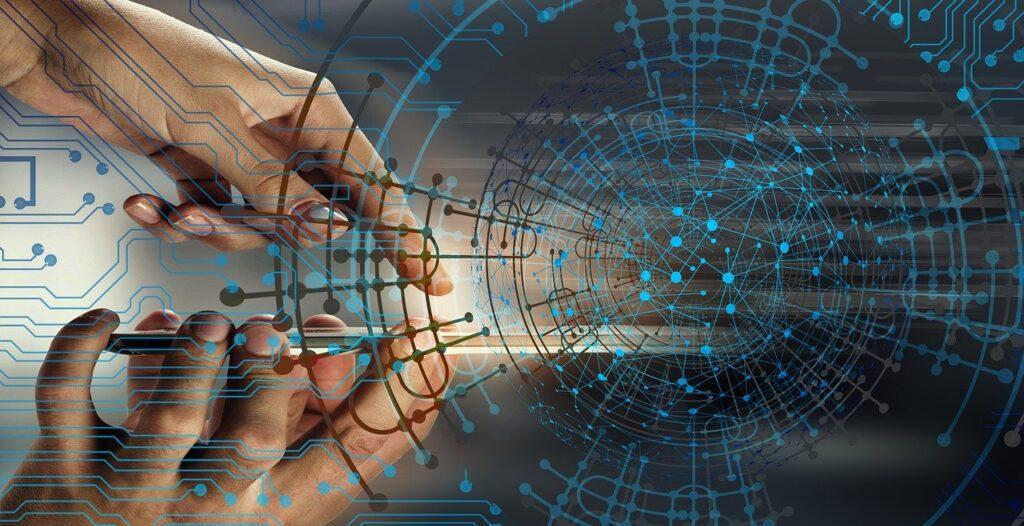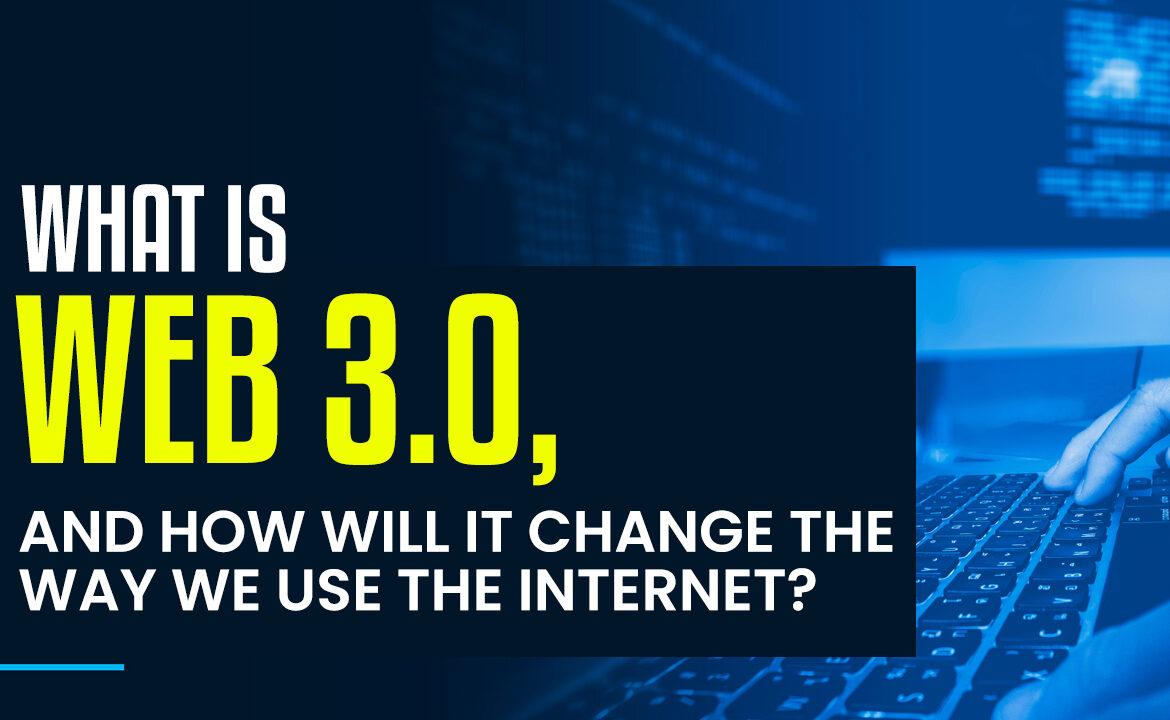What Is Web 3.0, And How Will It Change The Way We Use The Internet?
Did you know that the internet is evolving? Exactly what Is Web 3.0? The third version of the internet is on its way and it’s going to change the way we use the internet! With Web 3.0, we’ll be able to interact with websites in a totally new way- by using voice commands and facial recognition technology.
So what does that mean for us? Well, it means that instead of having to search for information online, the information will come to us! Imagine being able to ask your computer for specific information about a product or service and getting an immediate response. That’s what web 3.0 is all about! So keep an eye out for this new evolution on the internet- it’s sure to make

What is Web 3.0?
Web 3.0 is going to be a much more advanced version of the internet that will allow users not just to read and write content, but also interact with real-world in virtual iterations through 3D graphics or stores fitted for VR devices! We will compare all versions in detail.

How is Web 3.0 different from Web 2.0, Web 1.0?
There are three versions of the Internet: Web 1.0, Web 2.0, and Web 3.0. They all operate differently and offer different experiences to users. Let’s take a closer look at each one.
1. Web 1.0
By 1990, Sir Tim Berners-Lee had written the three fundamental technologies that became the foundation of the web. These include an early webpage editor/ browser (World Wide Web) called “worldwide web.”
web 1.0 used Hypertext Markup Language, the markup or formatting language of web pages. Uniform Resource Identifier (URI) and Locator are used to identify each resource on a website through its unique address created by HTTP protocol which enables retrieval from across the internet.
The Internet was still in its infancy when it launched, and many people were delighted by features like email. The most popular use of the web during this time period? Online banking!
The introduction of new browser technology-led users towards more interactive applications that could be used on websites – including real-time news updates or chat rooms for conversations about various topics. However, these improvements came at a cost: static pages without any interactivity made everything seem quaint compared to what we have today.
2. Web 2.0
Web 2.0 is a shift in how people use the internet, where instead of just looking at boring websites from years ago you can now interact with them and make your own content seen by millions across different countries all over the world!
In the second decade of this century, we have seen exponential growth in Web 2.0 due to key innovations such as mobile internet access and social networks that enabled powerful devices like iPhones or Android-powered ones with app-based features for greater interactivity online – Airbnb; Facebook (now Meta); Instagram; TikTok Twitter Uber WhatsApp YouTube among others.
With the rise of these Web 2.0-centric companies, many other major global brands have seen their market capitalization increase exponentially over time—among them Apple (FAANG), Amazon, Google/Alphabet Incorporated(GOOGL).
The gig economy is thriving, with millions earning income from driving or renting their homes. Many people are also making money by selling goods and services online on sites like Uber Eats!
Web 2 .0 has been disruptive enough to cause concern in some industries – retailing especially feels vulnerable because it hasn’t adapted well enough yet while entertainment may never be the same again after Netflix came along giving us access at our fingertips any time we want it.
3. Web 3.0
Web 3.0 is the next iteration or phase in our evolution as humans beings and represents a potentially disruptive force on this planet like never before with its decentralized nature.
open approach towards innovation & user utility that demands greater control by users themselves instead of corporations who only look out for their own interests.
Web 3.0 has evolved far beyond the original concept of a Semantic Web, as conceptualized by Sir Tim Berners-Lee in 2001.
Web 3.0 has created a new world for internet users by making it easier and more affordable with its interactive features that allow you to communicate in the same language as your computer or phone, regardless of where they are located!
If you need more insights on the working of web 3.0 Click Here.
Features of Web 3.0

Though there is as yet no standardized definition of Web 3.0, it does have a few defining features:
Decentralization
With Web 3.0, data generated by disparate and increasingly powerful computing resources like mobile phones or desktops will be sold through decentralized networks so that users retain ownership control over their personal information while also being able to access any application without hurdles from third-party servers.
Privateness
Web 3.0 is an open, decentralized system that creates a more trusting and efficient way of interacting online by allowing users to sell their data through encrypted networks without going through trusted intermediaries.
Natural-language understanding with Semantic Web and Artificial Intelligence
The future of Web 3.0 is a world where the computer can understand information like humans, through technologies based on Semantic Web concepts and natural language processing.
In this way, it will use machine learning which imitation how we learn over time to improve its accuracy in many fields such as drug development or new materials for manufacturing products- instead there are only targeted advertising at present
Better Connectivity and Ubiquity
With Web 3.0, information and content are more accessible than ever before—available for consumption in a variety of ways through various applications on your device or even if you’re not online at all! For example, there’s IoT (the Internet Of Things).
What are the Benefits and Drawbacks of Web 3.0?
Web 3.0 is an upgrade to the internet that will decentralize it and give users more control over their personal data, which may help limit extraction practices like those at Google by curbing network effects allowing monopoly-like conditions for companies who exploit advertising strategies based on user information without consent or compensation.
The lack of central control will make it tough to police cybercrime, hate speech and misinformation. Decentralization also brings significant legal risks as well; how can we expect to regulate websites that may exist globally?
How Web 3.0 will change the way we use the internet?

The future is uncharted territory and we are so early in blockchain adoption. There’re many macro- issues making this movement towards Web 3 inevitable – things like government regulation, security risks etc.
The expected areas are of influence are:
Automates the Trust
Decentralized finance is the new way to trade and invest your money. You no longer need a bank account or rely on third parties like credit card companies, brokers- you can become an active trader yourself with decentralized financial tools!
The internet has made data go round the world while blockchain automates banks’ functions by letting people become their own lenders in this fast-paced marketplace.
Enables a True Economy without Intermediaries
Freeing the world’s economy from intermediaries is not only good for consumers but also creators. They will be able to provide their products and services directly with no middlemen taking a cut of what belongs rightfully in one pocket or another!
The future looks bright because we finally have web 3.0 – an automatically-privatizing system that does all this work so you don’t have to do anything else yourself when shopping online.
Exchange Work for Play
A feeling has swept over the world like Web 3.0, which promises to turn our lives into an endless game of fun and profit with help from a global community that shares information as they go along- it sounds too good to be true!
But there’s something worth noting: this new era will only happen if we all participate by exchanging those days spent working at desks or offices against one another so each person can take advantage according to what best suits them individually–maybe you’re more interested in creativity than commerce? Or maybe travel Agoda bookings sound better right now.
Sounds pretty amazing, right? This is just the beginning of what Web 3.0 has in store for us! Be sure to stay tuned as more and more companies start adopting these new technologies. In the meantime, be sure to check out some of our other blog posts about how to make the most of this exciting new era of the internet. Thanks for reading!
A comprehensive guide to Custodial and Non-custodial NFT marketplace 2022 Click Here.
Some of the most exciting NFT Projects for 2022 that investors should keep an eye on Click Here.


4 thoughts on “What Is Web 3.0, And How Will It Change The Way We Use The Internet?”